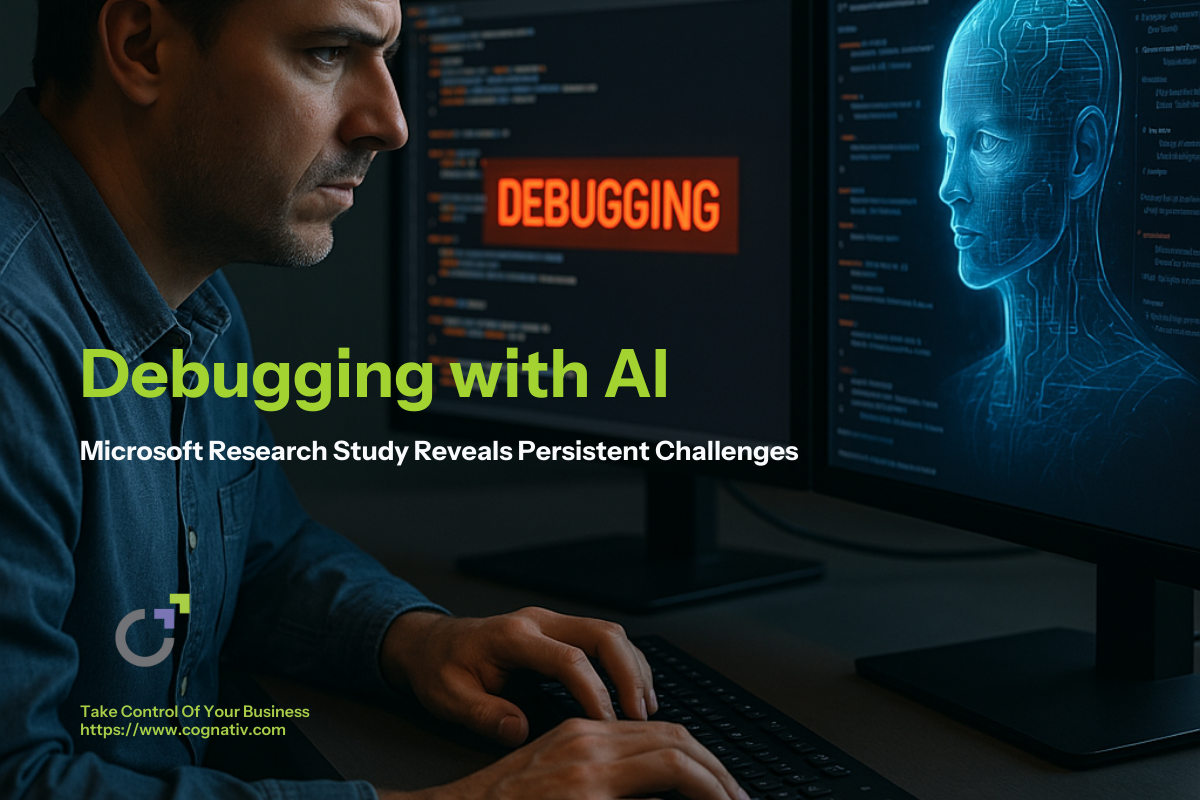Debugging with AI: Microsoft Research Study Reveals Persistent Challenges
Despite the rapid integration of artificial intelligence in software development workflows, a new Microsoft Research study has revealed that current AI models still struggle to effectively debug code. Released in April 2025, the study evaluated top-tier models from OpenAI, Anthropic, and others, testing their ability to resolve bugs using a real-world programming benchmark.
As companies like Google and Meta scale up their reliance on AI-generated code, the findings serve as a timely reminder: AI may assist with development, but it is not yet capable of replacing human expertise in software debugging. Even with access to advanced tools and prompts, many leading models failed to complete more than half of the debugging tasks presented.
This article explores the key takeaways from Microsoft’s research, what the findings mean for the future of AI coding tools, and how organizations can approach AI development with a balanced and realistic strategy.
Table of Contents
- Benchmarking AI Debuggers: How the Study Was Conducted
- Model Performance Breakdown
- Why Are AI Debuggers Underperforming?
- Implications for AI Adoption in Software Engineering
- Industry Leaders Respond to the Findings
- How to Move Forward: Building Resilient AI-Enhanced Development Workflows
- Final Thoughts

Benchmarking AI Debuggers: How the Study Was Conducted
The Microsoft study used a test suite known as SWE-bench Lite, a curated benchmark consisting of 300 real-world software debugging tasks. The researchers tested nine different large language models (LLMs) under consistent conditions:
- All models operated within a prompt-based agent framework.
- Agents had access to debugging tools, including a Python debugger.
- Each task simulated a real developer bug-fix scenario.
- Despite the assistance of tooling and structured prompts, the results demonstrated notable limitations across the board.

Model Performance Breakdown
Top Performing Models (Average Success Rates):
- Claude 3.7 Sonnet (Anthropic): 48.4%
- OpenAI o1: 30.2%
- OpenAI o3-mini: 22.1%
These numbers illustrate that even the best-performing models fail more than half of the time on realistic debugging challenges.
"Many models struggled to utilize the debugging tools correctly or determine when and how they should be applied,” the study authors noted.

Why Are AI Debuggers Underperforming?
The underwhelming results weren’t due to model size alone. Researchers attributed the gap to several key factors:
1. Tool Misuse
Models often lacked the ability to properly invoke or navigate debugging tools, revealing a procedural and contextual gap in their understanding of the development process.
2. Lack of Sequential Reasoning
Effective debugging often requires step-by-step analysis—something that AI currently finds challenging. Models failed to follow logical progression or adapt based on prior output.
3. Data Scarcity
Training datasets lack detailed examples of human debugging behavior, such as code trace logs and iterative fix sequences. This weakens a model’s ability to simulate developer reasoning.
“We strongly believe that training or fine-tuning [models] can make them better interactive debuggers,” the authors stated. But without trajectory data, progress remains limited.

Implications for AI Adoption in Software Engineering
While the study’s findings may not be surprising to experienced developers, they are highly relevant to leaders exploring AI integration in their development pipelines.
- AI should augment, not replace human decision-making—especially in critical code review and debugging workflows.
- Code quality assurance processes must include both automated scans and manual oversight.
- AI-generated code should be treated as a first draft, not production-ready output.

Industry Leaders Respond to the Findings
The Microsoft study adds to a growing chorus of voices urging caution about overestimating AI's capabilities in programming. Key industry figures have echoed similar sentiments:
- Bill Gates, Microsoft Co-Founder: “Programming as a profession is here to stay.”
- Amjad Masad, Replit CEO: "AI is a tool. It’s powerful, but it’s not a replacement for engineering thinking.”
- Todd McKinnon, Okta CEO: "AI boosts productivity but doesn't eliminate roles.”
- Arvind Krishna, IBM CEO: "Engineers will become more strategic, not obsolete.”

How to Move Forward: Building Resilient AI-Enhanced Development Workflows
Best Practices for Companies Using AI Coding Tools:
- Treat AI as an Assistant, Not an Engineer: Position AI to handle documentation, boilerplate code, and low-risk tasks.
- Establish Human-Centered QA Loops: Mandate peer reviews and test coverage for all AI-generated code.
- Track and Validate Model Outputs: Use telemetry to understand when and how AI fails, and share insights across teams.
- Incorporate Specialized Training Data: If building internal models, include data from real debugging sessions to improve sequential reasoning.
- Promote Developer Autonomy and Feedback: Engineers should feel empowered to critique or reject AI suggestions—especially if they compromise performance or security.

Final Thoughts
Microsoft’s study provides one of the most detailed analyses to date of the limitations of AI in debugging software. While the models tested show promise in accelerating development workflows, they fall short in key areas that require logic, context, and adaptive reasoning.
For now, AI remains a valuable tool—but not a replacement—for software engineers. As models improve and datasets expand to include interactive developer behaviors, the future of AI debugging looks bright—but we’re not there yet.

